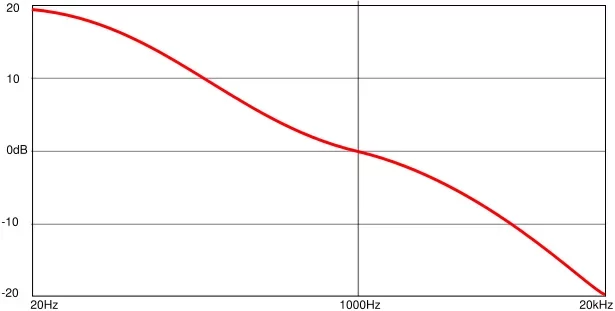Vinyl LPs are less consistent and less accurate than high quality digital wave files, yet endearing to many because of its hands-on requirements. Vinyl playback requires active engagement. Kind of like tinkering with an old favorite car. Vinyl playback encompasses a range of artifacts that can create a unique sound; change cartridges and the sound changes. Adjusting tracking level or anti-skating and it changes yet again. Adjust the vertical tracking angle and it is again modified. Due to wear, LPs also degrade with each play.
The romance of the LP is defined by low channel separation, microphonic effects of bass feedback, surface noise, a deviant L-R/L+R ratio, dust accumulation, groove distortion and defects in the molded vinyl. Seems most every new record has a factory pop or tick in it somewhere. Many people think the LP hosts two discrete channels in a separate left groove, right groove. Not at all. Whether moving coil or moving magnet, the signal generated is the result of vertical and lateral ridges causing the upper end of the stylus to gyrate the relationship of a coil relative to a magnetic field as the lower end of the stylus bounces along in the grooves.
Am I denouncing vinyl? Of course not – people enjoy what they enjoy. But for less than the cost of a high end turntable you can get digital plug-ins that will give you controllable amounts of surface noise, saturation, compression, print-through, high frequency roll-off, and added rumble. If you like the Amy Winehouse effect- this is the best way to get it. If you have heard the original Marvin Gay ‘I Heard It Through the Grapevine’ analog tracks, you’ll know the saturation, noise and distortion was added later as an effect- even back then. The originally recorded tracks did not sound like that. Just like Adele’s ‘Rolling in the Deep’, complete with the classic Phil Spector-like Wall of Sound character of the background vocals. You may buy it as digital – but it still has that sepia toned sound of vinyl.
For me, 20 years of buffing and cleaning vinyl were enough. Personally, I prefer my remote control and 6 terabyte collection of wave files (which include many master recordings and vinyl transfers). I like to be true to the history of the recording, but I’ll take it as pure as I can get it from there. If you have access to a high performance cartridge, I’d consider transferring the vinyl to file – much as I transferred them on the first play to 15ips open reel tape as a kid to preserve them. It has been demonstrated that a 48kHz, 24bit recording of vinyl is undetectable from the original. It will retain the sound of vinyl playback in every way- flaws and all – and you’ll have a long lasting reliable means of playback. (Pick up a used Alesis Masterlink, 24 bit recorder/burner and you’re set. Mine holds about 50hrs of music.)
Vinyl’s Character Explained

Sampling rate: At 33.3 RPM you start out with 37″ of circumference representing 1.8 seconds of music on the LP’s first cut,. At the end of the last track you are down to 13 inches for the same 1.8 seconds. In simple terms, your sampling rate is 185% higher at the start then at the end.
Massive equalization: RIAA equalization is a form of pre-emphasis on recording, and de-emphasis on playback. You go through a 40 dB boost/cut and then a 40 dB cut/boost. RIAA equalization is not a simple low-pass filter. It carefully defines transition points in three places: 75 µs, 318 µs and 3180 µs, which correspond to 2122 Hz, 500 Hz and 50 Hz.
Signal to Noise ratio: The signal to noise ratio is around 50 dB. Yikes.
Channel Separation: 25dB is considered good at 1kHz. A third of what digital offers.
Compression: Dynamic peaks can be compressed as much as 2:1 to accommodate vinyl in the mastering/cutting process, particularly at bass frequencies.
Wow and flutter: Unlike digital where playback is buffered and is synched to a precise clock, vinyl is dependent on a motor speed accuracy .
Whether belt or direct drive, variations may be detected on sustained notes.
Rumble and low frequency feedback: Another drawback of the system is that rumble from the playback turntable’s drive mechanism is greatly amplified on RIAA playback. Rumble can rob amplifiers of much of their power and introduce offset and distortion to the woofers. The deeper the speaker reaches, the worse it can get. However, if you record the LP to a digital file without acoustic interference of speakers, the low frequency feedback can be avoided on later playback.